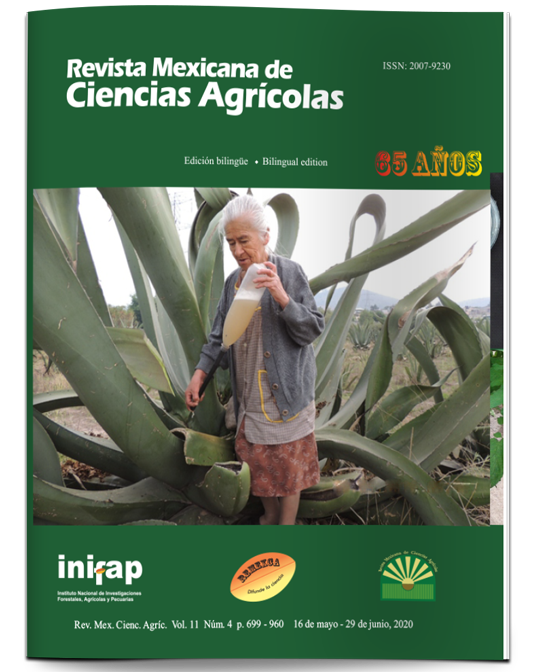Agroecological management for the restoration of soil quality
DOI:
https://doi.org/10.29312/remexca.v11i4.2462Keywords:
biointensive management, chemical properties, compost, physical propertiesAbstract
In the Agro-ecological Center “Las Cañadas” located in Huatusco, Veracruz, the agro-ecological management of production systems has been implemented for approximately 20 years, as an alternative to the negative effects caused by conventional agriculture; however, the beneficial effect and the magnitude with which each of these systems has contributed to the restoration of soil quality since its implementation is unknown. In the present work, the current state of the quality of the soil of the different agroecological production systems, as well as of the natural forest through its chemical and physical properties and the diagnosis of the state of soil fertility for crop production, were assessed. Composite soil samples were taken from the ten production systems, as well as from two areas of restored and natural vegetation, to determine their chemical and physical properties, the local inputs used in the fertilizer of the crops were also chemically characterized. In general, ecological production systems; through the addition of local organic matter, minimal tillage of the soil and complementary additions of inputs have contributed to the regeneration of the natural quality of the soil in its chemical properties, but the recycling of nutrients from local inputs is insufficient to cover the nutritional needs of crops for optimal production. Agroecological management has also contributed to the fact that physical properties such as microporosity, usable humidity and stable aggregates have managed to reach the original level in the soil.
Downloads
Published
How to Cite
Issue
Section
License
Copyright (c) 2020 Revista Mexicana de Ciencias Agrícolas

This work is licensed under a Creative Commons Attribution-NonCommercial 4.0 International License.
The authors who publish in Revista Mexicana de Ciencias Agrícolas accept the following conditions:
In accordance with copyright laws, Revista Mexicana de Ciencias Agrícolas recognizes and respects the authors’ moral right and ownership of property rights which will be transferred to the journal for dissemination in open access. Invariably, all the authors have to sign a letter of transfer of property rights and of originality of the article to Instituto Nacional de Investigaciones Forestales, Agrícolas y Pecuarias (INIFAP) [National Institute of Forestry, Agricultural and Livestock Research]. The author(s) must pay a fee for the reception of articles before proceeding to editorial review.
All the texts published by Revista Mexicana de Ciencias Agrícolas —with no exception— are distributed under a Creative Commons License Attribution-NonCommercial 4.0 International (CC BY-NC 4.0), which allows third parties to use the publication as long as the work’s authorship and its first publication in this journal are mentioned.
The author(s) can enter into independent and additional contractual agreements for the nonexclusive distribution of the version of the article published in Revista Mexicana de Ciencias Agrícolas (for example include it into an institutional repository or publish it in a book) as long as it is clearly and explicitly indicated that the work was published for the first time in Revista Mexicana de Ciencias Agrícolas.
For all the above, the authors shall send the Letter-transfer of Property Rights for the first publication duly filled in and signed by the author(s). This form must be sent as a PDF file to: revista_atm@yahoo.com.mx; cienciasagricola@inifap.gob.mx; remexca2017@gmail.
This work is licensed under a Creative Commons Attribution-Noncommercial 4.0 International license.



